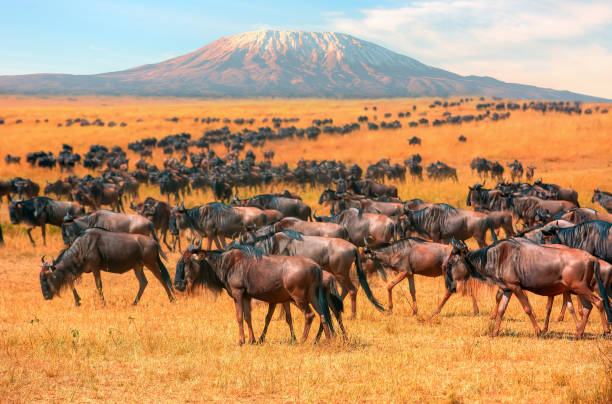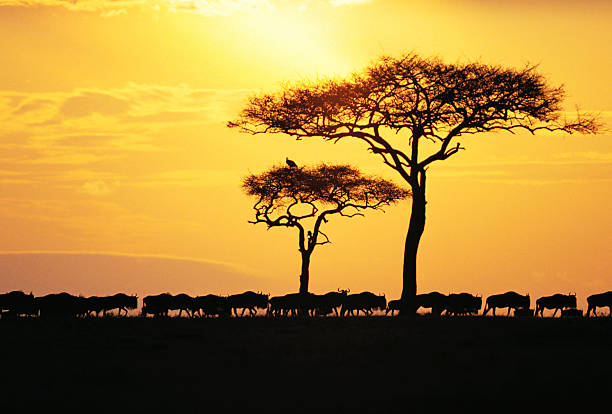Maasai Mara, also known as Masai Mara, is situated in the south-west Kenya. The Masai Mara National Reserve is one of the greatest wildlife reserves of Africa. Combined with the Serengeti National Park in Tanzania, Masai Mara forms the Africa’s most diverse ecosystem and world’s one of the most favourite safari zones.
Covering a huge area of 1,510 sq. km. (580 sq. miles) with an elevation of 1,500 to 2,170 meters above sea level, Masai Mara National Reserve is the home to over 95 species of mammals and more than 570 species of birds.

What to do in Masai Mara
Wildebeest migration:
The Great Wildebeest Migration is one of the most spectacular phenomena in every year at Masai Mara National Reserve. After calving in the Serengeti National Park, Tanzania, the big columns of wildebeest and other animals migrate through Serengeti towards Masai Mara every year in search of nutritious grass and water. Over a million of wildebeest take part in this great migration along with 300000 zebras, Topi and some Gazelles. Thousands of them are killed by predators like lions, cheetahs and crocodiles and another thousands of animals are born. This is the largest herd movement of animals, which can be seen from the space.
Safari:
Safari in Masai Mara National Reserve is a once in a lifetime experience. You will get to see the big five: lion, leopard, elephant, buffalo and rhino. You may also encounter many other mammals at Masai Mara National Reserve including giraffe, zebras, hyena, chetahs and wildebeest. The population of lion and African Bush Elephant is exceptional at Masai Mara.
Hot air balloon:
Hot air balloon safari is one of the most thrilling experiences you can have at Masai Mara. Awake before dawn and embark on a hot air balloon, you can experience the vastness of Savanna. Have a bird eye view on the animals down below. If you plan your trip accordingly, you may see the Great Migration of Wildebeest from the sky.
Visit nearby tribal village:
Your trip to Masai Mara would be incomplete if you do not visit a nearby tribal village. The Masai is a warrior community which is known for their unique culture and dressing pattern. They have a belief that the color, red scares the predators, even a lion from a long distance. Therefore, they prefer red color in their dresses. Visit a Masai village and mingle with them to know their rich and unique culture and tradition.
Take a walking safari:
Experience the Savanna on foot with a local guide. This guided tour in the Masai Mara National Reserve will reconnect you with mother nature. With the limitless horizon of the Savanna, fresh breeze, sounds of crickets, this safari will give you an unforgettable experience.
Landscape and wildlife photography:
Take out your camera and capture the mesmerizing beauty of the landscape to be framed for lifetime. You will also love to capture some wild actions with your zoom lens. A photo competition is organized yearly, known as Great Masai Mara Photographer of the Year. You can try your hands in photography by participating in that competition. The revenue collected from the competition is used for conservational drives of Masai Mara National Reserve.

Accommodation:
There are a wide range of accommodations available at Masai Mara. Make sure that at least two full days are needed for you to enjoy the vastness of Savanna at Masai Mara National Reserve. Depending upon your budget, you can choose a private luxury stay or a sharing tent. Tents are also safe.
Best time to visit:
The mother nature has something to give you on every day of the year. However, July to October is considered as the best time to visit Masai Mara National Reserve. Please remember to customize your trip accordingly if you want to see the Great Migration of wildebeests.
Conclusion:
If you are a wildlife enthusiast, Masai Mara National Reserve is one of the best places to visit for some once in a lifetime experiences.
Read more articles HERE